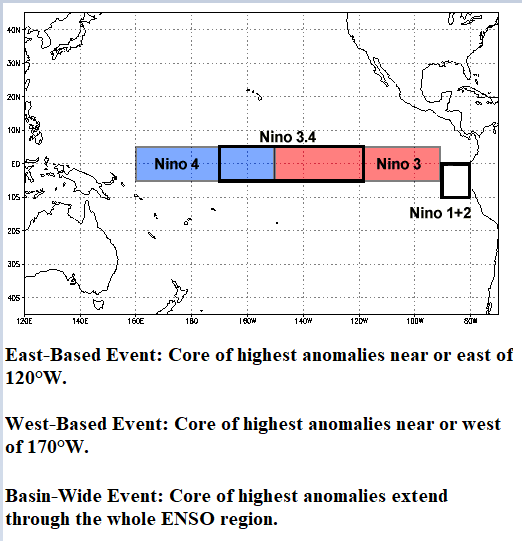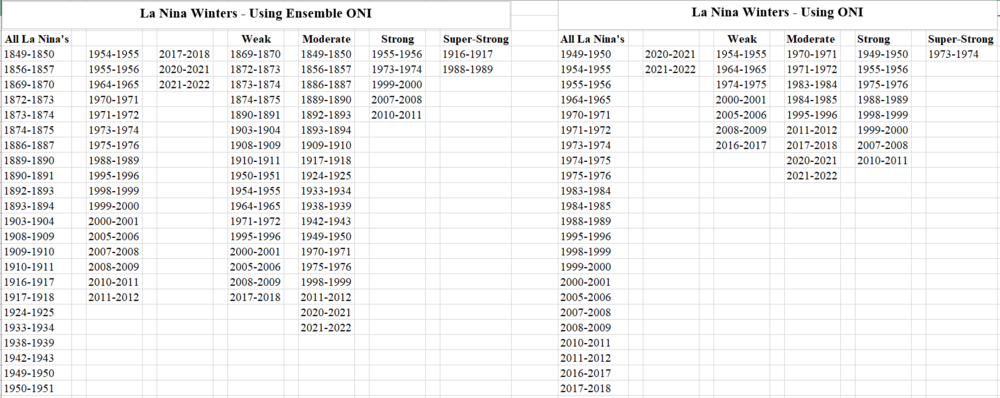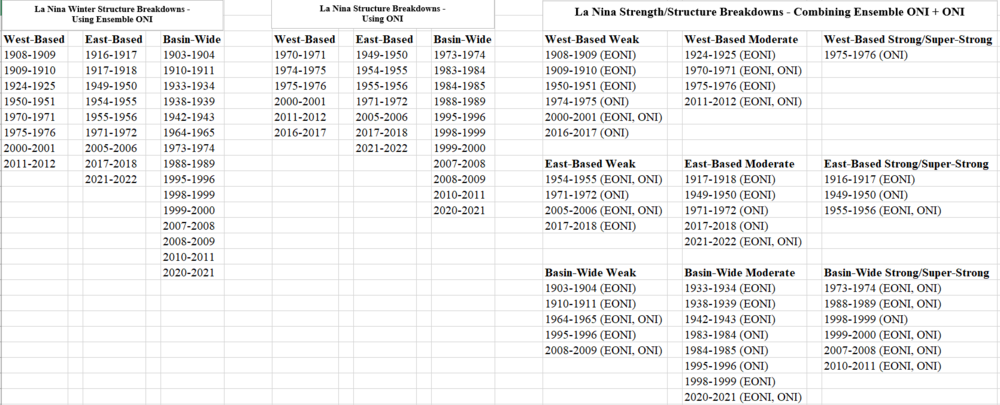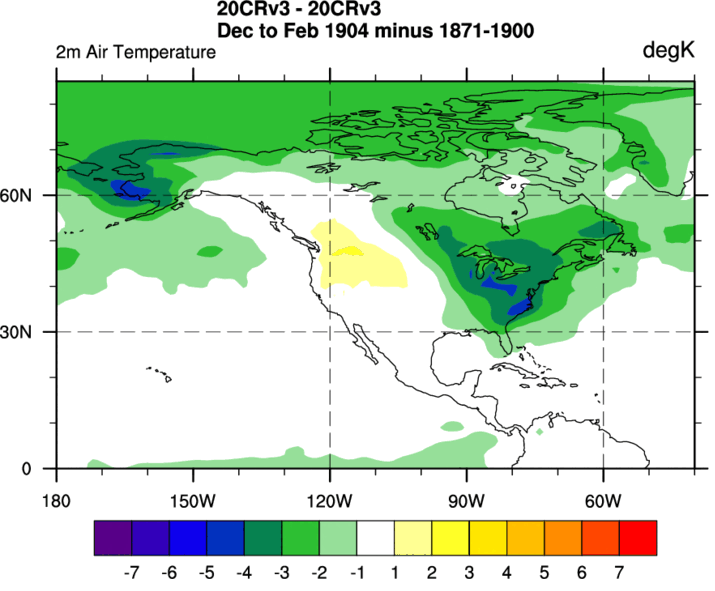Search the Community
Showing results for tags 'discussion'.
-
The purpose of this thread is not directed towards the discussion of current ENSO state or ENSO forecasting as there is a thread for that in the main form, but the purpose of this thread is to elicit discussion about ENSO and how ENSO may influence, shape, or drive global (or hemispheric) weather patterns. As we know, when it comes to long-range weather forecasting, the state of ENSO is a widely and very popular used index. However, is ENSO all that it is played out to be? It is this question here which drives the creation of this thread. The most popular metric for measuring ENSO state is the Oceanic-Nino Index (ONI). The CPC defines a La Nina event as 5-consecutive trimonthly periods in which SSTA's within region 3.4 are at least -0.5°C or colder. An EL Nino event is defined as 5-consecutive trimonthly periods in which SSTA's within region 3.4 are at least +0.5C or greater. If neither of these conditions are met, the ENSO state is said to be neutral. While the ONI is the most commonly metric used and perhaps the most universally accepted metric, the ONI is not the only metric available to measure ENSO state. In fact, there are at least 50-different definitions available to define ENSO state. A meteorologist by the name of Eric Webb has done some phenomenal work and research regarding ENSO. His work can be found on the following link https://www.webberweather.com/ensemble-oceanic-nino-index.html Eric Webb has created the Ensemble Oceanic Nino Index. Eric Webb's Ensemble ONI dates back to 1950 (compared to the ONI which dates back to 1950). Eric Webb defines an ENSO event of at least 50% of ENSO definitions met surrounding a particular month, irrespective of the events duration and/or potential discontinuities with adjacent months. (For more on ENSO definitions he explains in detail on his page linked above). In order to get started with my contribution to this thread and discussion I have done some work just focusing on La Nina Winters. My hope is to continue such work for EL Nino events as well and even focus outside the winter months. Given I have a love and fascination with long-range weather forecasting, my personal goal is to just develop and enhance those skills, or at the very least, just understand what influences global weather patterns and how those patterns correlate to local weather even better. This initial post is set to look for similarities in ENSO events with a correlation on winter (DJF) temperature anomalies across the northern hemisphere. In addition to just classifying an ENSO event, the strength of that particular event is very important as the strength can have a significant impact on the large-scale global pattern (especially in stronger events). The following guidelines (which are the most widely accepted for strength breakdown) were used: Weak Event: SSTAs +/- 0.5°C to +/- 0.9°C Moderate Event: SSTAs +/- 1.0°C to +/- 1.4°C Strong Event: SSTAs >/< +/- 1.5°C Super-strong: </> +/- 2.0°C As we all know, every ENSO event is shaped differently (each event has its own "flavor". While the state of ENSO alone is an important consideration the structure if just as, if not, perhaps more important then ENSO state alone. By structure of the ENSO event we're referring to where the core of highest anomalies are present. This can help identify whether a particular event is a west-based event, east-based event, central-based event, or basin-wide. This was something I had always seemingly struggle to do and that's how to classify this breakdown. Upon reading Ray's winter outlook last season, I was heavily influenced by what he had done. I was trying to make such a classification much harder than need be. From Ray's influence this was used as a metric to distinguish between the different structures: Before getting a bit more in-depth into some initial work I want to provide some definitions to yield some context. 1. An event was classified if ANY winter month within the trimonthly data involved a defined La Nina 2. The strength was based on the peak SSTA during the event 3. Additional notes were added to highlight borderline events - in terms of the event itself, strength, and structure (but this is not incorporated within anything posted here). Below is a list of defined La Nina Winters using Eric Webb's Ensemble ONI and the CPC's ONI along with the strength breakdown Below is a structure breakdown of La Nina Winters using Eric Webb's Ensemble ONI and the CPCs ONI along with a grouping of ENSO phase/structure/ In parenthesis indicates if it is Ensemble ONI defined, CPC defined, or both: Temperature Anomalies The first part of this project was solely focusing on temperature anomalies vs. ENSO state. So this is a breakdown of comparing temperature anomalies for the winter as a whole (DJF) based off of ENSO state (as defined by both Ensemble ONI and CPC ONI), and where core SSTA's were located within the ENSO region. This will be expanded to also analyze outgoing longwave radiation anomalies (to pinpoint where convection/subsidence is present), zonal wind anomalies (focus on trade winds and upper-level jet), sea-level pressure anomalies, and more. When it came to assessing temperature anomalies, I wanted to do something different. Due to the state of a warming climate (whether this be human-induced/influence, cyclical, or a combination of both goes beyond the realm of this scope) I didn't feel like we could compare say weak La Nina winter temperature anomalies from the early 1900's to a climatological period of 1981-2010 or the latest, 1990-2020. Using the following website https://psl.noaa.gov/data/atmoswrit/map/index.html I was able to create different climatological periods and choose which period the temperature anomalies were being compared too. I used 20th Century Reanalysis V3 (For Years 1904 to 1981) and NCEP/NCAR R1 (for years 1982 to Present) as my datasets. While Eric Webb's Ensemble ONI data goes back to 1850, the dataset for the variables (temperature) went back to like the 1880's or something. What I did was used the following climatological periods. In parenthesis would be the years used against that climatological period's mean (Note: I also did this in the construction of SSTAs which I can perhaps post in a subsequent post): In order to save space I will post a GIF of the following (Note: I will focus on just the Ensemble ONI Index here since it's a larger dataset). For now I will only post the All La Nina Winters (DJF) Temperature Anomalies and then post these additional GIFs over the coming days. I also used a consistent legend (-7°F to +7°F with an interval of 10°F). 1. All La Nina Winters (DJF) Temperature Anomalies 2. Weak La Nina Winter Temperature Anomalies 3. Moderate La Nina Winter Temperature Anomalies 4. Strong/Super-Strong La Nina Winter Temperature Anomalies 5. West-Based La Nina Winter Temperature Anomalies 6. East-Based La Nina Winter Temperature Anomalies 7. Basin-Wide La Nina Winter Temperature Anomalies 8. Weak West-Based La Nina Winter Temperature Anomalies 9. Moderate West-Based La Nina Winter Temperature Anomalies 10. Strong/Super-Strong West-Based La Nina Winter Temperature Anomalies 11. Weak East-Based La Nina Winter Temperature Anomalies 12. Moderate East-Based La Nina Winter Temperature Anomalies 13. Strong/Super-Strong East-Based La Nina Winter Temperature Anomalies 14. Weak Basin-Wide La Nina Winter Temperature Anomalies 18. Moderate Basin-Wide La Nina Winter Temperature Anomalies 19. Strong/Super-Strong Basin-Wide La Nina Winter Temperature Anomalies I'm going to bold this part here as this is likely well-beyond a TLDR post but the point of this is too illustrate a few things: Outside of perhaps moderate west-based La Nina's, weak central-based La Nina's, and Strong/Super-Strong Central-Based La Nina's there actually doesn't appear to be a very strong signal correlating La Nina episodes to temperature anomalies across the Northern Hemisphere. Another point here is when you get into breaking down into finite details the sample-sizes become way too small. So I guess my point is that I have a hypothesis that ENSO (maybe just La Nina) does not have the weight or merit that we once thought it did. All La Nina Winters (DJF) Temperature Anomalies. Through the GIF you can see the variations in temperature anomalies which exist. Over the days I'll post the additional GIFs as well. I am hoping this may elicit some awesome discussion/research. You'll notice within the loop that climatological periods change as well as the dataset of computation:






